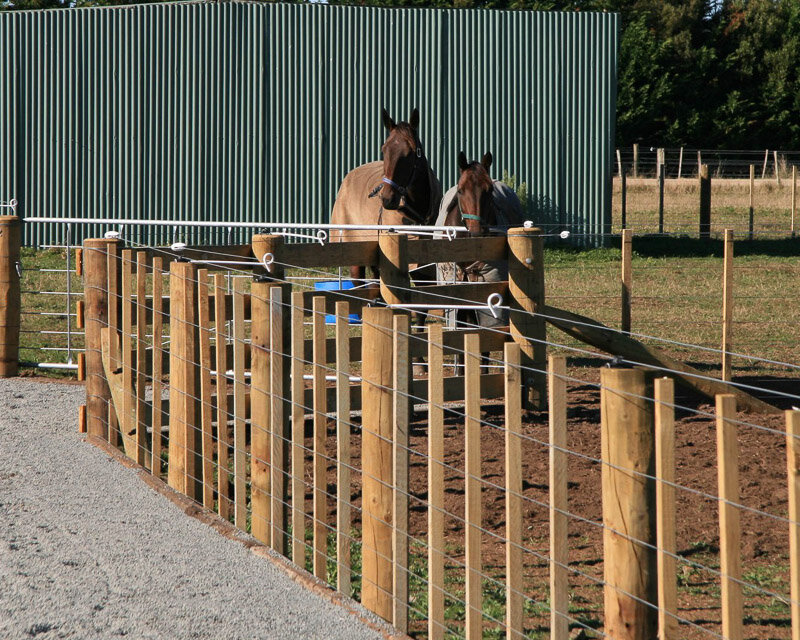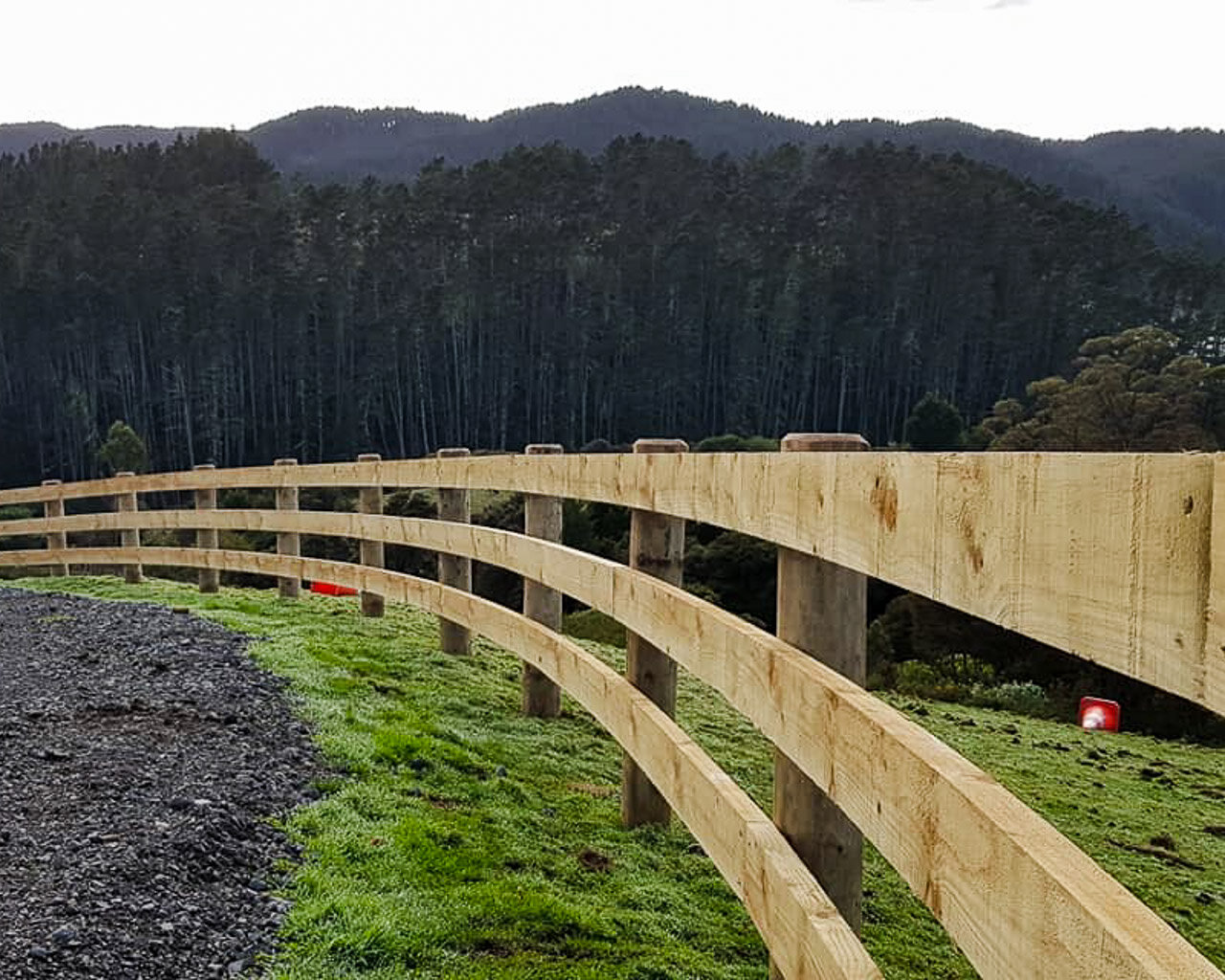Fence Types.
Post, Wire & Batten.
One of the most common types of rural fencing, also referred to as “conventional fencing”. Stock proof for sheep, cattle and horses.
Post & Rail Fencing.
The traditional, hard wearing, timber fence solution. Suitable for lifestyle blocks, feature fencing, horse & equine.
Electric Fencing.
High tensile, permanent electric wire systems are highly effective stock management options that will last and last.
Deer & Netting.
Netting can be used for animals such as deer, pigs, goats, sheep, horses and is a viable option for economical security fencing.
Please scroll down for more in depth information about each fence type.
Post Wire & Batten Fencing.
The purpose of a farm fence is to deter or prevent movements of stock. Post, wire and batten fencing is one of the most common types of rural fencing and is stock proof for sheep, cattle and horses. Electric or barbed wires can be incorporated into the fence to act as additional stock deterrents.
Generally 2.5 mm wire is used, though horse fencing may use 4 mm wire and coastal fencing requires a special galvanised wire.
White fencing uses NZ made wire products including wire, staples, gates and gate hardware. The reasoning behind this is product longevity and meeting industry standard quality. We can supply a Labour and materials price, using selected materials from preferred suppliers. We can also provide Labour only pricing if the client prefers.
When comparing industry quotations check and compare post spacings, post grade, post profile (round, half, quarter cut) and the strainer grade. Hilly ground will need angles & foots.
Post & Rail Fencing.
Wooden post & rail fencing is often used around gate ends, on tricky corners or for tree boxes. Post and rail fencing is also used for feature fencing around gateways, buildings or road frontage. Many equestrian properties will use this as their main fencing type.
Post and rail is also used widely in stock yards/ stock management facilities.
White Fencing take great pride in our post and rail work and specialises in curved post and rail that follows the lands contour and flows around corners. Check out our video page to see an example project.
Post spacing’s are 2 metre apart and commonly used rail sizes are 150 x 50 mm or 150 x 40 mm. Common Configurations are 2 rail (requires up to 3 wires underneath for sheep); 3 rail is a standard configuration; or 4 rail.
Electric Fencing.
Permanent electric fences can be incorporated into conventional fencing, post and rail fencing and netting. Electrics are becoming more and more popular as a way of deterring stock and minimising wear and tear on fences.
Electrics are an option for cattle/dry stock, dairy, horses and around waterways/ drains. Dry stock electrics are normally 5 wire, 3 wire is more susceptible to cattle walking through it when turned off.
Connections including underground, cut off switches and electric fence units need to be factored in to the costs.
Deer and Netting.
Netting comes in a variety of forms for a variety of purposes. Wire netting is used on a variety of livestock and also for dog runs, poultry, pigs, sheep, deer and horses from a number of suppliers.
Netting is not only for stock/ farm purposes. It can be a more economic type of fencing for security/ urban purposes when priced against standard options.
White Fencing only choose the best suppliers, products and fence solutions to provide the best true long term value for money.
The Fencing Process.
For a bit of an idea on how we do a post & wire fence check out this video we shot on a project out near Beachlands. Our youngest fencer Murray shows us how efficient it is to use a posting gun on the fenceline.








